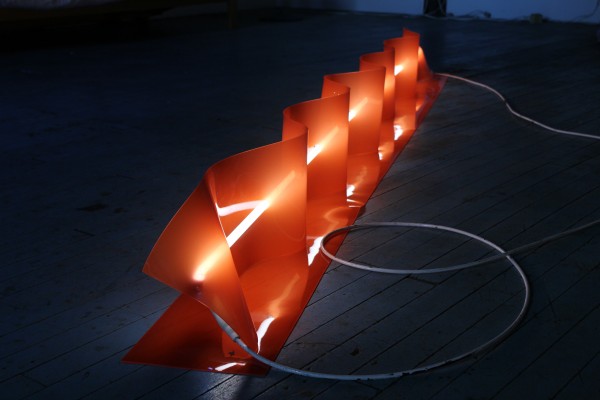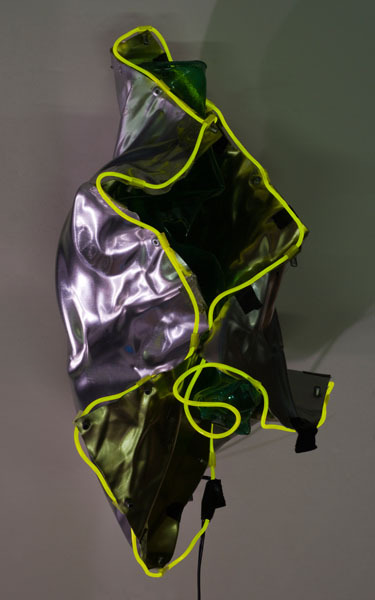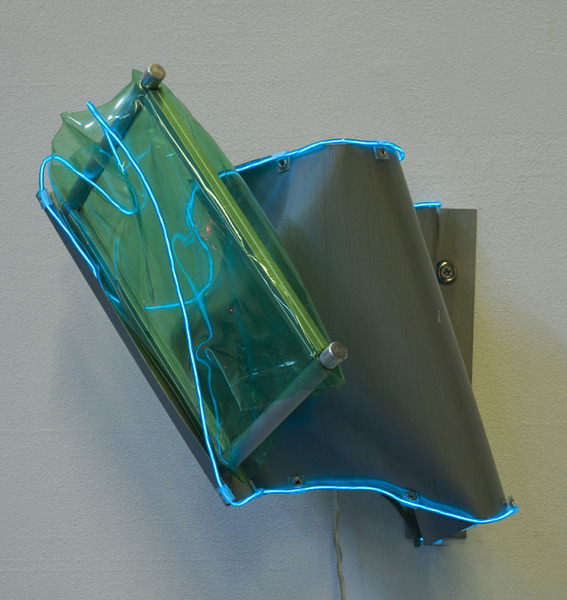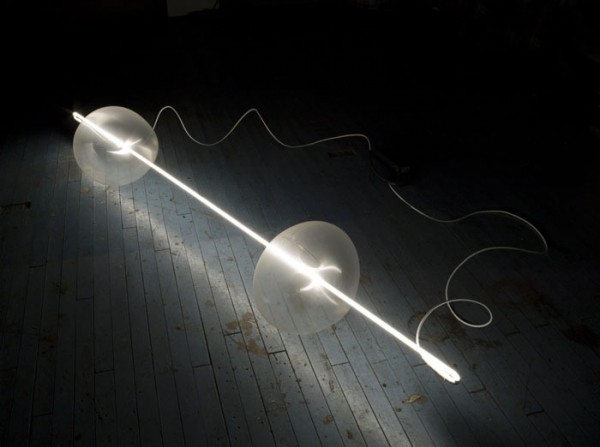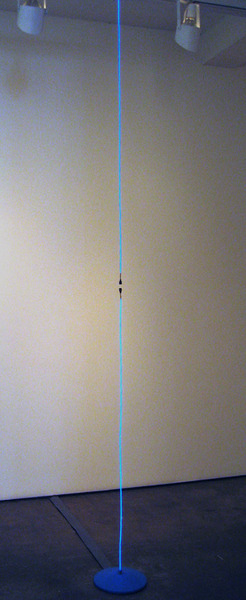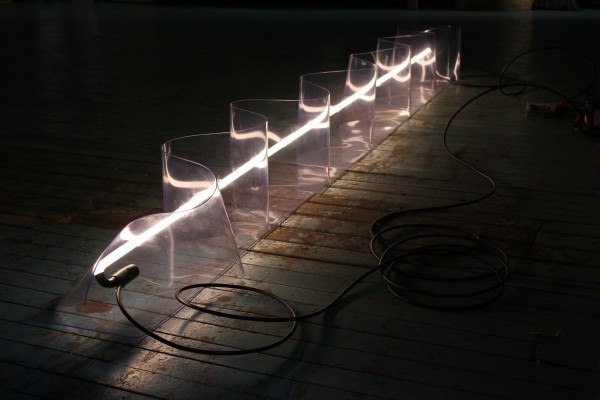James Clark
James O. Clark sculpts with light and deconstructs the history of neon-light sculpture by utilizing the interactivity of electric light to complete each piece. Since the early 1970s, Clark has continually sought a way to frame the concept of action without losing his work to the realm of stasis. In contrast to the smooth, polished veneer seen in Minimalist-inspired light sculpture, Clark frees this medium from the confines of a cubic structure. By experimenting with physical force, his work defines the abstraction of light through the acts of kinesis, illumination, reflection and refraction.
Clark’s current work incorporates the thin line of colorful electroluminescent cables around cut, crumpled metal in addition to unexpected fragments taken from daily life. This translation of the moving line into a tangible glowing wire explores the perception of color as well as unfettered motion. The artist spins a sense of mystery into installation pieces that feature mundane objects such as transparent balloons and tie-dyed chickens that signify nothing in terms of visual metaphor.
With a satirical nod toward Abstract Expressionism, the artist continues to expand on Jackson Pollock’s artistic method of free movement in three-dimensional form. Clark’s work has been strongly influenced by the art scene of SoHo during the late 1960s, drawing from the conceptual art movement generated by the Park Place Gallery, in addition to the artist collectives known as GRAV, Group Zero and the Gutai Group.

